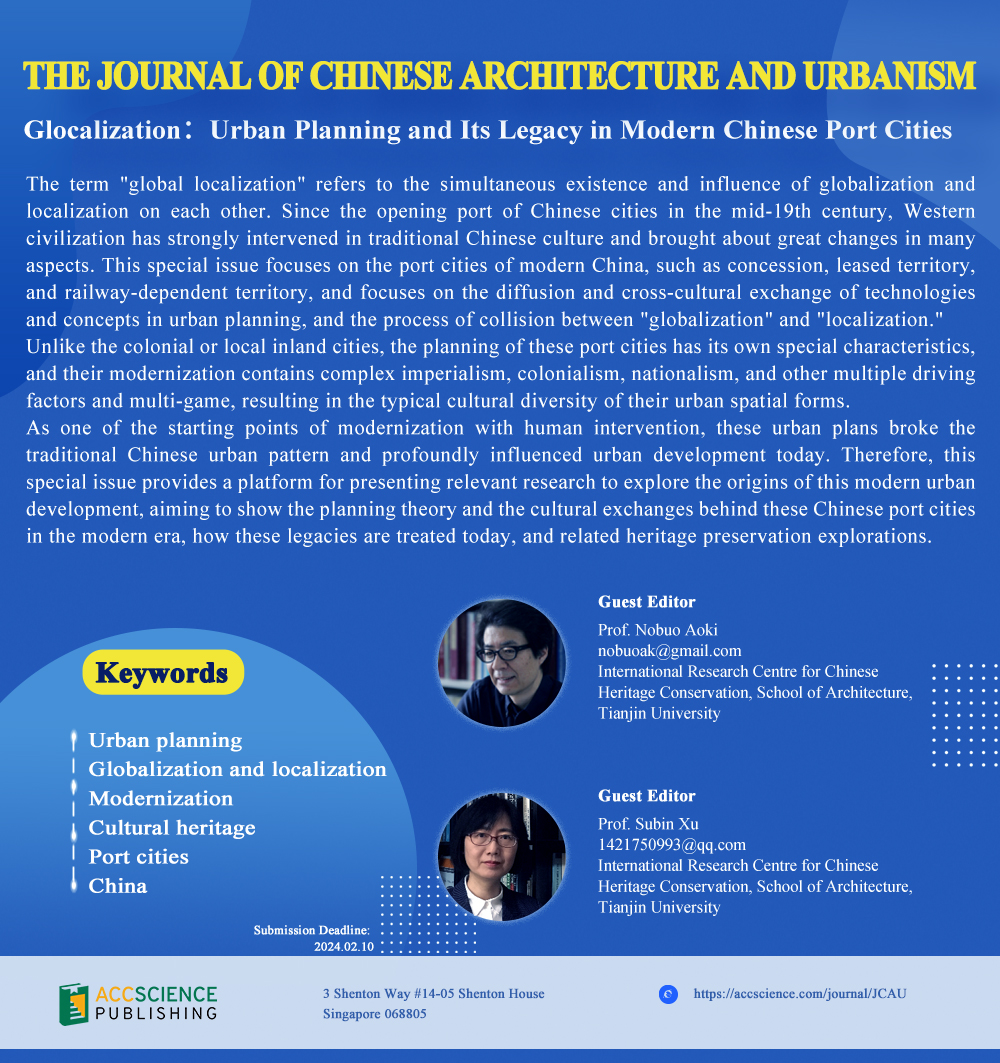
The term "global localization" refers to the simultaneous existence and influence of globalization and localization on each other. Since the opening port of Chinese cities in the mid-19th century, Western civilization has strongly intervened in traditional Chinese culture and brought about great changes in many aspects. This special issue focuses on the port cities of modern China, such as concession, leased territory, and railway-dependent territory, and focuses on the diffusion and cross-cultural exchange of technologies and concepts in urban planning, and the process of collision between "globalization" and "localization."
Unlike the colonial or local inland cities, the planning of these port cities has its own special characteristics, and their modernization contains complex imperialism, colonialism, nationalism, and other multiple driving factors and multi-game, resulting in the typical cultural diversity of their urban spatial forms.
As one of the starting points of modernization with human intervention, these urban plans broke the traditional Chinese urban pattern and profoundly influenced urban development today. Therefore, this special issue provides a platform for presenting relevant research to explore the origins of this modern urban development, aiming to show the planning theory and the cultural exchanges behind these Chinese port cities in the modern era, how these legacies are treated today, and related heritage preservation explorations.
Adaptations in early 20th-century modern Chinese architecture: The pursuit of a “new architectural style” in Art Deco
Spatial production and evolution of commercial ports in the ocean shipping era: A case study of modern Fuzhou and Xiamen in Fujian province, China
Hangs and trading posts: The global development of the Thirteen Factories in Guangzhou
“Creative” uses of heritage in the age of experiential tourism: The case of Tianjin’s former international concessions
Re-approaching the origins of waterfront public space on Shanghai’s historic Bund: Social negotiation and urban construction, 1840s–1870s



